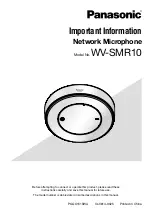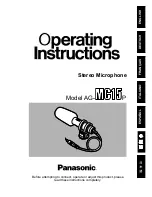
The N/D868 is truly a top performer in any application.
Whether in a live sound or studio environment, the
N/D868 is able to handle incredibly high sound pressure
levels without distortion or overriding the input mixer.
With a response specifically designed to kick the
N/D868 can be used as is - no additional EQ required.
Electrovoice was the first to utilize the neodymium
magnet structure, and it remains at the heart of our new
N/DYM series of microphones. Experience the leader
again for the first time and hear the difference.
Designed specifically for kick drum applications in
live or studio environments
Optimized sensitivity for the high sound pressure
levels found in bass drum micing
Extended low-frequency response
No additional EQ required
Rugged steel construction for exceptional durability
Operation
The low frequency response of the N/D868 microphone
varies with the distance from the sound source. Known as
proximity effect, maximum bass response is produced
in close-up use with the microphone ¼ inch from the
sound source. Normal bass response is experienced with
working distances greater than 24 inches. Working close
to the microphone will produce a more robust sound.
Close up positioning of the microphone will also reduce
the potential for feedback from the sound reinforcement
system. When , the bass-boost provides an increase in
overall microphone output level. The mixer gain may be
proportionately reduced, resulting in a reduction of the
systems sensitivity to feedback caused by sound entering
the microphone from the loudspeakers.
Microphone Use and Placement
Please note that micing techniques are a matter of personal
preference. These are merely guidelines to assist in the
placement of the microphone to gain optimal performance.
Usage
Optimal Placement
Kick Drum
Remove drum head and damp
with a pillow or blanket.
Position the mic on the pillow
or blanket a few inches in
front of the drum beater. As
an alternative, position the
mic on a small boom stand
with the mic extended into the
drum and at a 90° angel to the
drum beater.
Standard Placement & Use Guidelines
1.
Always point the microphone at the desired source of
sound, and away from any unwanted sources.
2.
The microphone should be located close to the
sound source to minimize interference from other
potential sound sources.
3.
Use the 3-to-1 rule when using multiple
microphones. Place each microphone three times
farther from other microphones as from the desired
sound source.
4.
Minimize over-handling of the microphone to reduce
unwanted mechanical noise
5.
Working close to the microphone will increase the
bass
tone
and
also
provide
increased
gain-before-feedback.
N/D868 User Manual
W I R E D
M I C R O P H O N E




















